“There is nothing—absolutely nothing—half so much worth doing as simply messing about in boats,” Rat said to Mole in The Wind in the Willows.
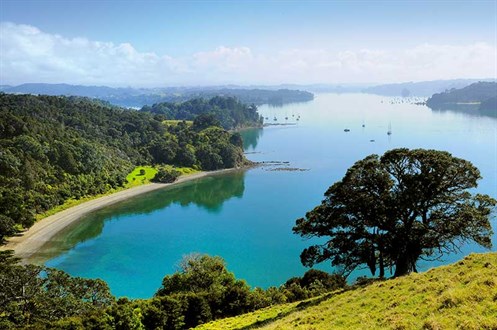
I heartily agree with Rat. Messing about in boats is particularly pleasant when that boat is my one-person kayak, and I am afloat on the splendid Mahurangi Harbour with its layers of headlands and pretty, sometimes secret, little bays.
Kayaking with Percy Blandford Classics
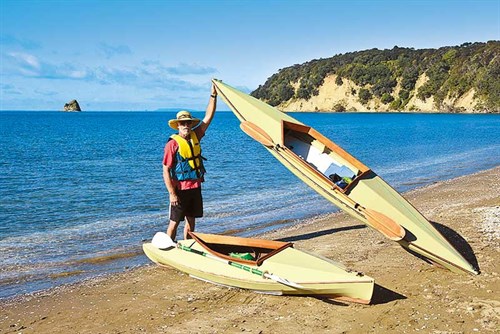
The kayaks that my husband Sam and I love are classics and are both older than us. They date back to the 1950s. Actually, only their skeletons are that old. To use kayaking parlance, their skins are newish, at about 25 years old.
This style of kayak, Percy Blandford Classics, was the home-built kayaks of the New Zealand Boy Scouts and numerous other father and son or daughter duos from the 1950s until the 1970s. Kauri was the favoured timber for the stringers—the elegant wooden framework that stretches from bow to stern.
Percy Blandford, a British gent, designed 30 different kinds of kayaks and canoes for homebuilders during the post-war austerity boom, and he sold more than 770,000 plans to people in all corners of the world, until the ’70s when commercially made fibreglass and plastic kayaks began to infiltrate the market.
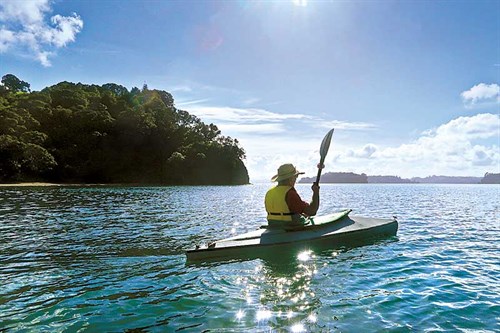
In the 1990s, when Sam and I had a post-crash austerity situation and he couldn’t find work, he brought the wooden frames of two Percy Blandford kayaks, the canvas long since rotted, for $25 each, from an aged enthusiast’s shed of retired treasures.
Sam lovingly mended their tired kauri frames, reskinned them with canvas, sized the canvas, and painted it, and we have subsequently had 25 years of happy kayaking.
Our favourite and closest harbour is the Mahurangi, and the best days to mess about on it are the still, clear days of winter when one can see forever and when the sun is low and the water gleams and glimmers like a trillion diamonds.
Launching at Sullivan’s Bay
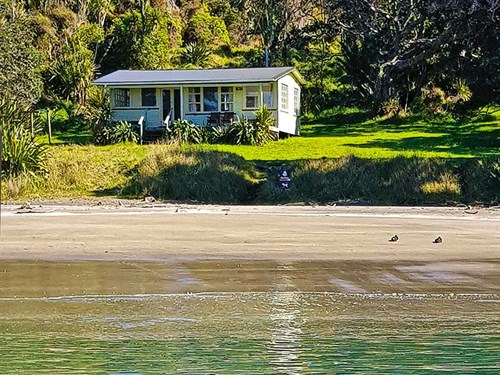
We launched at Sullivan’s Bay in Mahurangi Regional Park and paddled across the harbour, out the mouth and turned left to Big Bay. It can have long dumpy waves, in an easterly, but on that day, the waves barely turned.
We walked along this paradisiacal beach, hemmed with low-branched pohutukawa and wished we lived there. Big Bay is in the park, doesn’t have vehicle access, and is almost
always deserted.
Paddling to Lagoon Bay
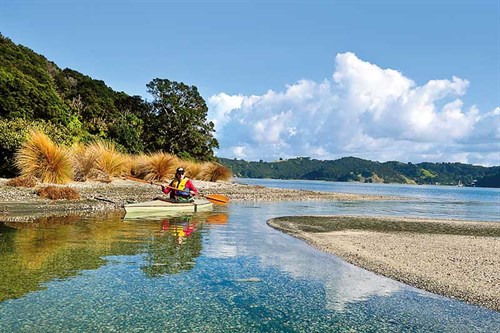
It was a brisk paddle back into the harbour and then on to Lagoon Bay. Here, being high tide, we had a lovely time kayaking into the often-dry lagoon.
It had pretty sedge grasses on the edge, dotterels peeping, and clear water. The shallowness of this sweet little lagoon added fission and required careful navigation. We were often in danger of running aground.
Scooting to Scotts Landing
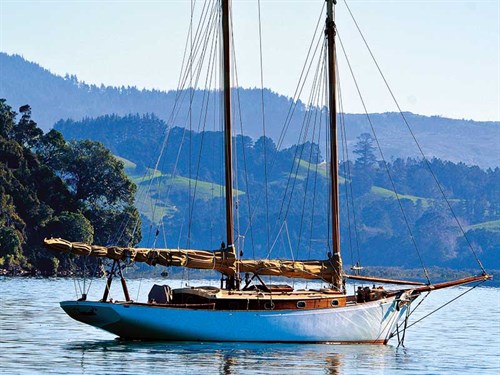
The next destination was Scotts Landing on the north side of the harbour but also in the park. Here we pulled our lunch out and sat at a picnic table perfectly placed on a grassy point. There’s no doubt that sandwiches taste a whole lot better after a strenuous morning paddling.
While sitting in the sun, and enjoying a cuppa, we watched activities on the harbour. A gannet, who was fishing, hurtled itself from high into the water.
A gnarled white-haired man launched a dingy bulging with fishing nets; he was off to catch flounder. A lovingly restored old launch chugged out of the harbour, passing a yacht, towing a dinghy, heading the other way.
Behind the beach at Scotts Landing there’s a two-storied 1877 Georgian mansion that belonged to generations of Scotts and now belongs to the park. It has been restored to a white, picket-fenced properness that it probably never had.
Around 150 years ago, Scotts Landing was the hub of the harbour and busy with kauri milling and boat building.
The Scott family built boats and the house began as a family home, then became a boarding house and, as the kauri was milled-out and the industry moved elsewhere, it morphed to become a pub, Richmond Arms, with folk coming up from Auckland on a steamer and staying the weekend.
The Scott family lived here until 1912 and then they, too, moved away, but the house remained their holiday home for a further 50 years.
The Pukapuka Inlet
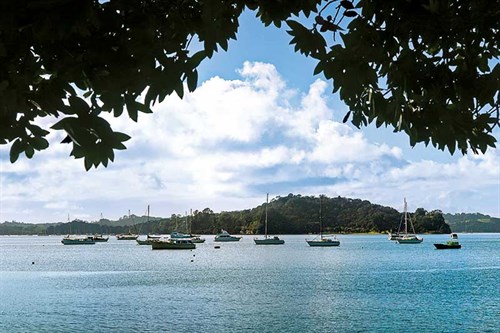
Looking west up the Pukapuka Inlet, one of the harbour’s many magnificent fingers, green farmland and patches of bush alternate on the low hills. New kauri, grown since the Scott family and others felled the ancient giants all those years ago, poke their tall straight crowns above the surrounding trees.
On other full-tide times, we have launched at Jamieson Bay and kayaked up the Pukapuka, paddling westward from sandy beaches to mangrove inlets and below cliffs fringed with audaciously clinging pohutukawa, past oyster farms and docks where people from mansions on the hills come to swim.
Te Muri Beach
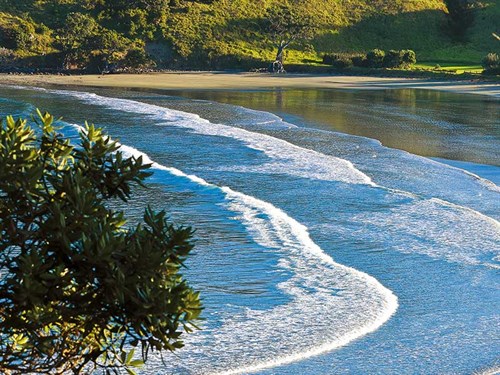
On other days, launching at Sullivan’s Bay, we have turned right at the harbour mouth and paddled south to Te Muri Beach, also in the park and also with no road access.
In summer, we swim and poke around in rock pools, pay our respects at a heritage cemetery next to the Te Muri Stream, and doze in the shade of a big tree until it’s time to paddle home again.
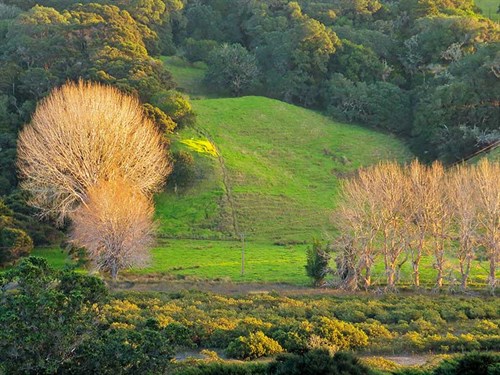
And with the day passing, heading home became a priority. We pointed the kayaks back towards Sullivan’s Bay and paddled off. There was a sea breeze to contend with, on the nose and then left of the beam, not enough to be too bothersome but required lots of paddling oomph.
By the time we got there, my shoulders were sore and the paddle had raised a blister on my left hand. Now that’s a sign of a paddling day well spent.





